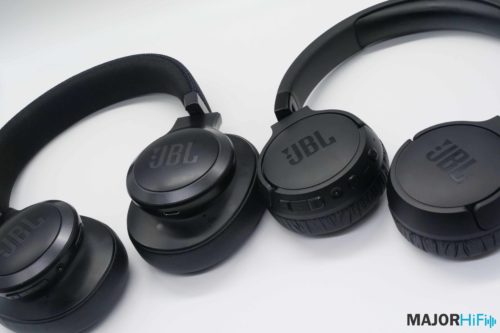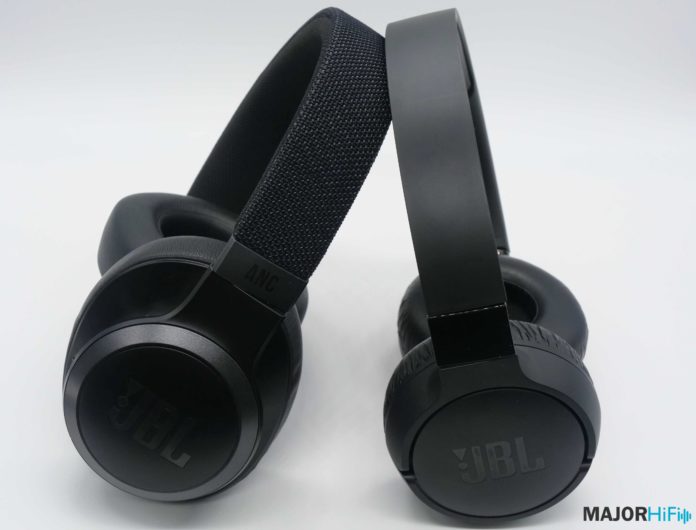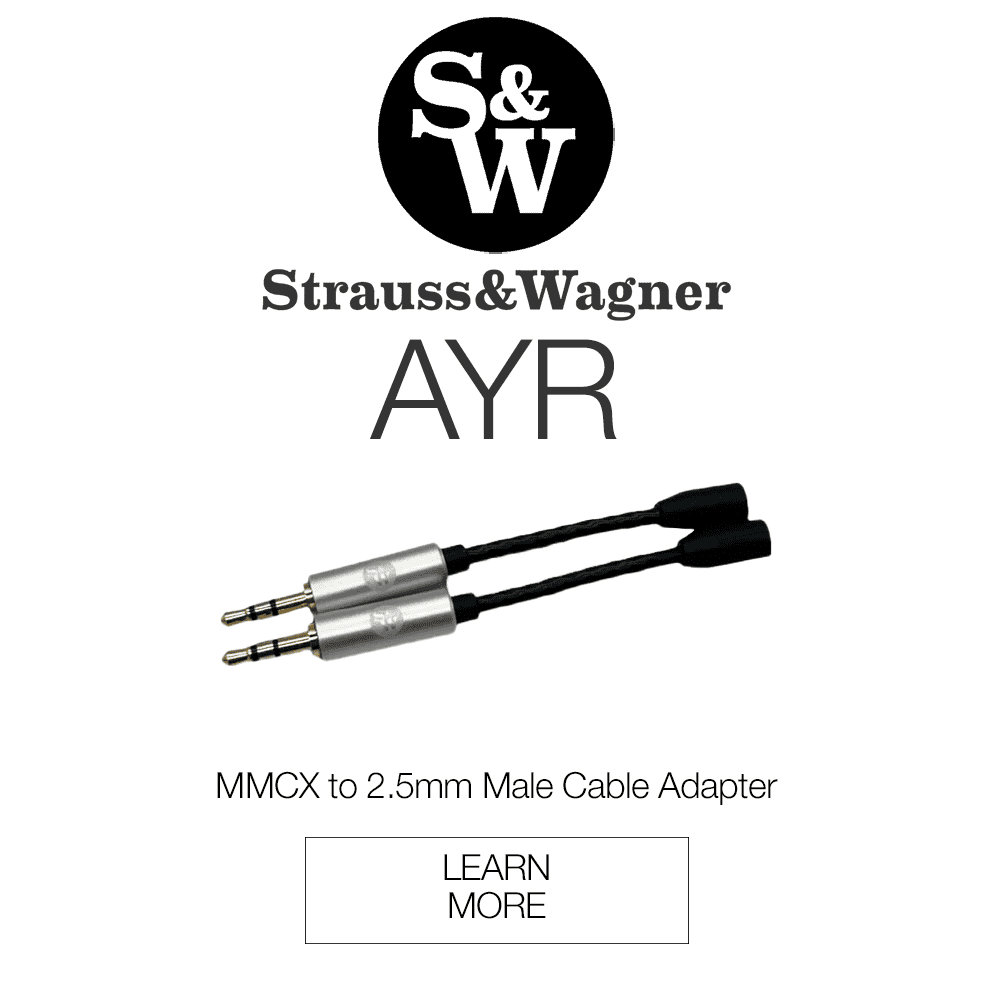If you’re looking at either the JBL Live 660NC or Tune 660NC, you’re likely wondering how they differ from one another, and why the Live 660NC ($199) is twice the price of the Tune 660NC ($99). Well, I’ve spent the day listening to both and comparing the two, so let’s talk about what your money will get you with each, and which is most worth it for you.

|
Tech Specs |
|||
|
Live 660NC |
Tune 660NC |
||
|
|
||
Looks and Comfort
At first, these two headphones may look relatively similar, but upon further inspection, there are some key differences. What I first noticed was that the ear cups on the Live 660 were almost twice the size of those on the Tune 660. While both are technically on ear headphones, the Live 660 almost feels like an over ear headphone (a headphone that surrounds the ears instead of sitting on top of them).
The Live 660 also has a softer, fabric headband as apposed to the mostly hard plastic headband on the Tune 660, which does still have some padding at the top of it. Both have a tight fit, with the Live 660 fitting a bit tighter than the Tune 660. Combined with it’s larger ear cups, the Live 660’s fit definitely makes for more successful sound isolation than the Tune 660, but not by a huge amount. Both headphones are on similar levels of comfort, but the Live 660 shows its higher price tag at the end of the day.

Sound Quality
These both have the signature JBL sound in many respects, with a noticeable tint added to the texture of each song. If you haven’t used a JBL headphone before, they have a warmer feel to them with a subtly vintage edge, but still retain an overall modern cleanliness. The Live and Tune 660 seem to take different approaches to their tuning overall, however. The Live 660 has a much more even, balanced sound, while the Tune 660 makes a significant boost of the mid range and noticeable cut of the low end. On the other hand, the Live 660 has a more smoothed out, neutral mid range and a nice boost to the bass that gives it more intensity, punch, and body.
I’d say the Live 660 is best suited for more modern music, whether it be hip-hop, pop, or electronic. Its stronger bass response and less biased mid range make it very versatile, but it definitely caters to the cinematic feel of the 21st century. The Tune 660 may not give you quite the same fullness of character for glossy, booming new-aged music, but could be a better choice for more classic or old-school compositions. Because of its somewhat sharpened sound, it’s able to bring out vocals, guitars, keyboards etc. from the sometimes thinner sounds of older recordings. It also adds a nice edge and extra texture to many elements, along with smoothing out the treble to keep there from being too much hiss. The Live 660 does not have the added mid range presence the Tune 660 does, instead deciding to place most of its attention on the low end and treble brightness.
Overall
To me, the Live 660 was overall a bit cleaner and more even-keel of a sound than the Tune 660, but it’s not a one size fits all. If you’re looking for a JBL headphone or a bluetooth headphone and are hard set on not spending more than $100, the Tune 660 definitely isn’t a cop out and by no means does it pale in comparison to its more expensive counterparts. However, if you find you have pickier, more critical ears and can swing the extra cash without much strain on your wallet, the Live 660 may better satisfy those with more particular taste.
You can purchase the JBL Live 660NC and JBL Tune 660NC at Audio46
Compare the ranking of various headphones, earbuds and in-ear monitors using our tools.
Discuss this, and much more, over on our forum.
---MAJORHIFI may receive commissions from retail offers.















